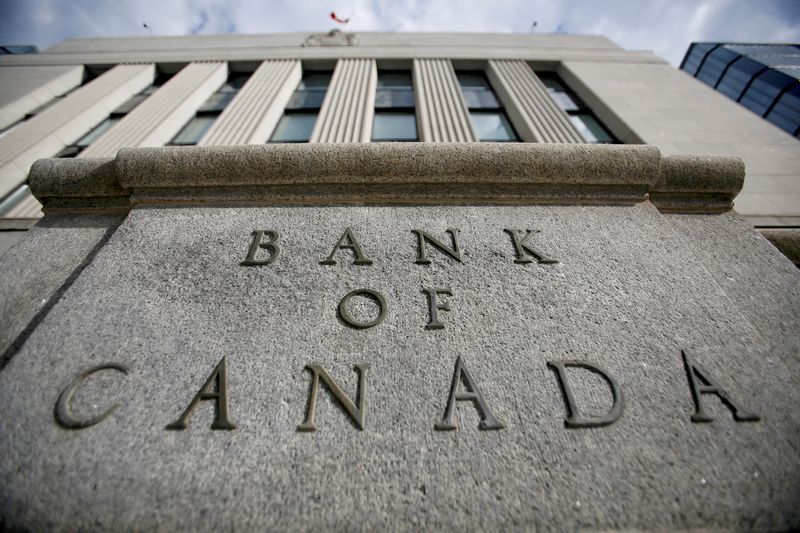By Nivedita Balu and Fergal Smith
TORONTO (Reuters) - Canada's record pace of interest rate hikes has led to the repayment period for many variable rate mortgages lengthening to over 30 years, helping to shield households from higher borrowing costs but raising debt loads and worrying regulators.
Variable rate mortgages in Canada typically require borrowers to make regular payments in fixed amounts. So if interest rates rise, a greater share of the payment goes toward paying interest on the loan rather than paying down the principal, thereby extending the amortization period.
Negative amortization is a situation in which borrowers are adding to the principal and occurs when interest rates climb as high as the trigger rate. That's the rate at which interest on the loan exceeds the fixed payment.
The Bank of Canada's surprise 25 basis-point interest rate hike this month and additional tightening expected either in July or September are likely to push more borrowers above their trigger rate.
Here are some of the implications of extending mortgage amortizations.
HOW UNIQUE IS THE SITUATION IN CANADA?
Variable rate loans account for one-third of the roughly C$1.5 trillion in outstanding residential mortgages held by Canadian banks, up from 18% before the start of the COVID-19 pandemic, data from Statistics Canada shows.
Unlike in the United States, where home buyers can lock into a 30-year mortgage, the typical fixed-rate mortgage in Canada renews in five years or less, so that home buyers renew more frequently and have greater exposure to the prevailing market rate.
WHAT IS THE EXTENT OF MORTGAGE AMORTIZATION EXTENSION?
Desjardins analyst Royce Mendes estimates that more than 20% of the mortgage portfolio of the big six Canadian banks had a repayment period greater than 30 years in the first quarter, up from roughly 2% one year ago.
More than a quarter of mortgages at Royal Bank of Canada and CIBC have an amortization period greater than 30 years. Both banks had no variable-rate mortgages with amortizations greater than 30 years prior to the start of rate hikes.
About 31% of BMO's mortgages are amortized over 30 years and include those with negative amortization and a quarter of TD's mortgages will be repaid after 35 years.
Bank of Nova Scotia and National Bank, which offer fixed repayment schedules and pass on the high interest rates to the borrower, have a very small portion of their mortgages that will be fully repaid after 30 years.
WHAT ARE THE RISKS?
If interest rates stay high over the next few years, as the central bank has warned, it raises questions about customers' ability to service bigger than anticipated debt at higher rates during renewals. That could trigger forced home sales, depress the housing market or lead to higher loan delinquencies.
For now, most banks say they are seeing only a slight uptick in bad loans. For the Bank of Canada (BoC), extending mortgage amortizations slows the transmission of monetary policy.
The big banks said most customers are able to cope with higher interest rates as they had passed a rigorous stress test to handle higher interest rates.
WHAT ARE THE AUTHORITIES DOING?
The BoC declined to comment for this story. But in May, Senior Deputy Governor Carolyn Rogers (NYSE:ROG) said extending amortization is a good "release valve" to deal with a temporary rise in payments.
Canada's banking regulator OSFI has urged banks to tackle the risks from amortization extensions and resolve negative amortization at the "earliest opportunity".
(This story has been refiled to clarify that outstanding mortgage amount is for Canadian banks in paragraph 6)
